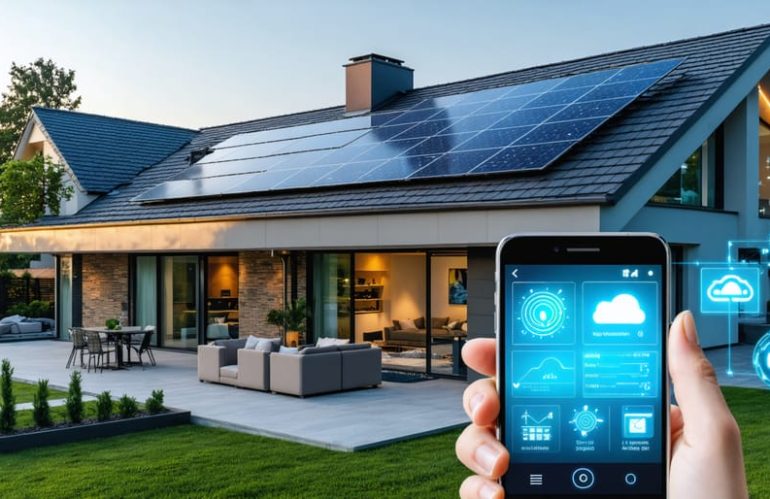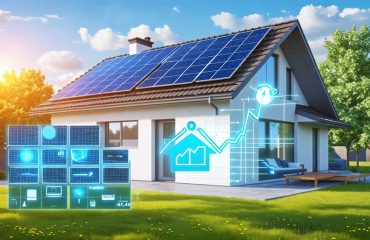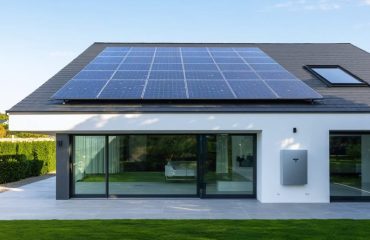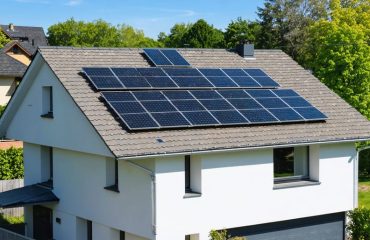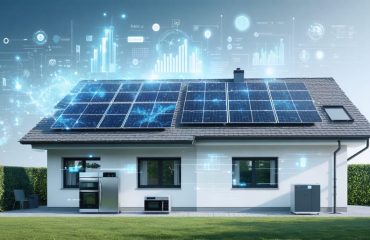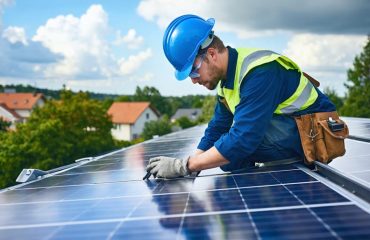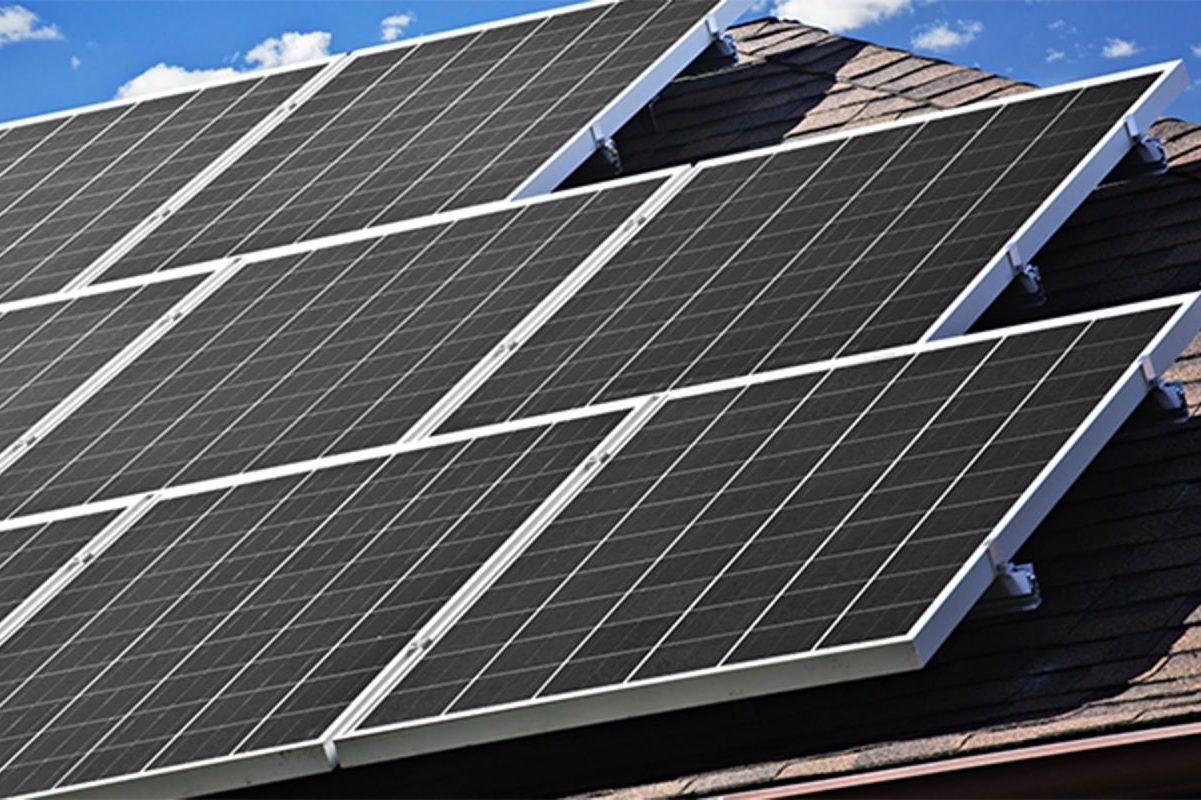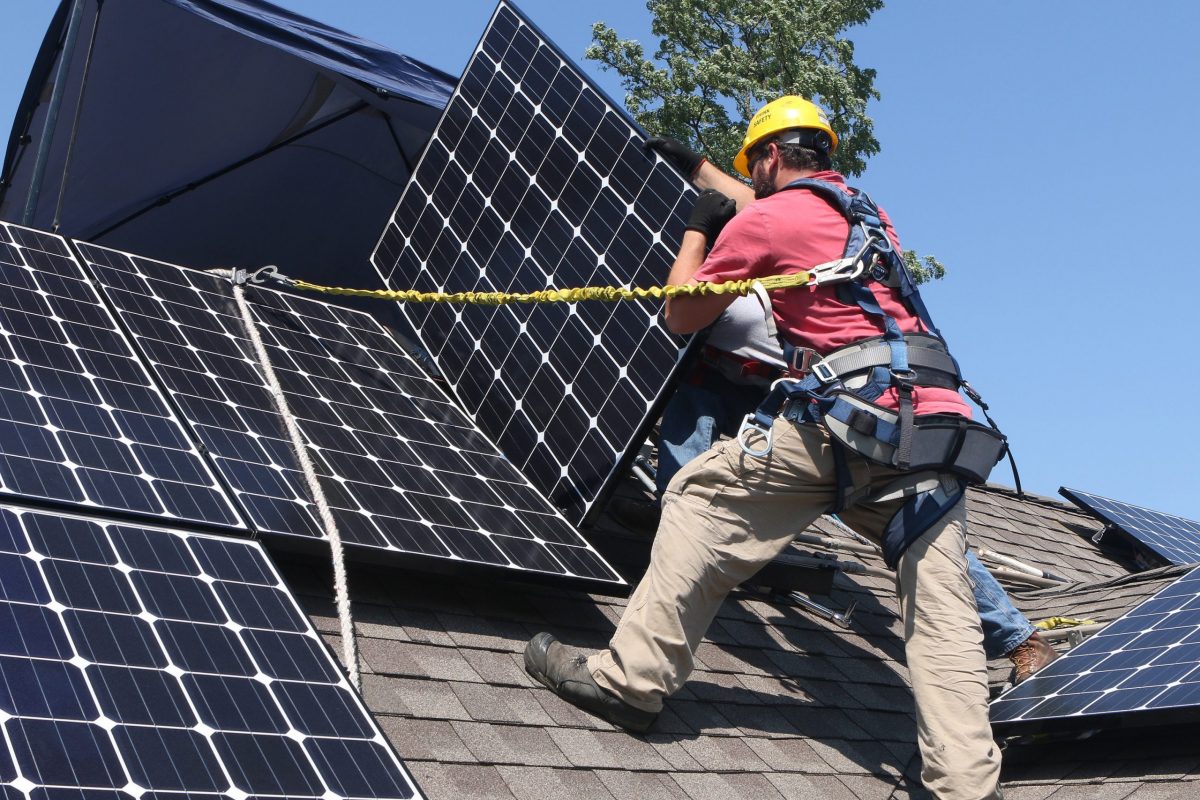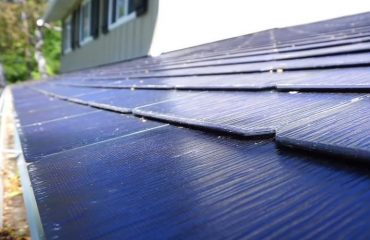Transform your home into an energy-efficient powerhouse with modern residential solar solutions that seamlessly integrate with existing household systems. Today’s integrated solar technology goes far beyond simple panels, creating a comprehensive energy ecosystem that intelligently manages power consumption, storage, and distribution throughout your home. Smart inverters automatically optimize energy flow between your solar panels, battery storage, and home appliances, while intuitive mobile apps give you real-time control over your energy usage. By combining solar generation with smart home automation, homeowners can reduce electricity bills by up to 90% while maintaining comfortable living conditions year-round. Whether you’re looking to minimize your carbon footprint or maximize energy independence, integrated solar systems offer a practical path to sustainable, cost-effective home energy management that pays for itself over time.
What Makes a Solar System ‘Integrated’?
Core Components
Modern integrated solar solutions comprise three essential components that work together seamlessly to power your home efficiently. Solar panels, typically installed on your roof or property, serve as the primary energy collectors, converting sunlight into electricity through photovoltaic cells. These panels are now more efficient and aesthetically pleasing than ever, with sleek designs that complement your home’s architecture.
Inverters are the system’s powerhouse, converting the DC electricity generated by your panels into AC power that your home can use. Modern inverters are highly efficient and often come with built-in safety features that automatically shut down the system if issues arise.
The third crucial element is the smart monitoring systems, which give you real-time insights into your system’s performance. These intelligent platforms track energy production, consumption patterns, and system health through user-friendly mobile apps. They can alert you to maintenance needs and help optimize your energy usage, ensuring you get the most value from your solar investment.
Together, these components create a reliable, efficient home energy solution that puts you in control of your power consumption while reducing your carbon footprint.
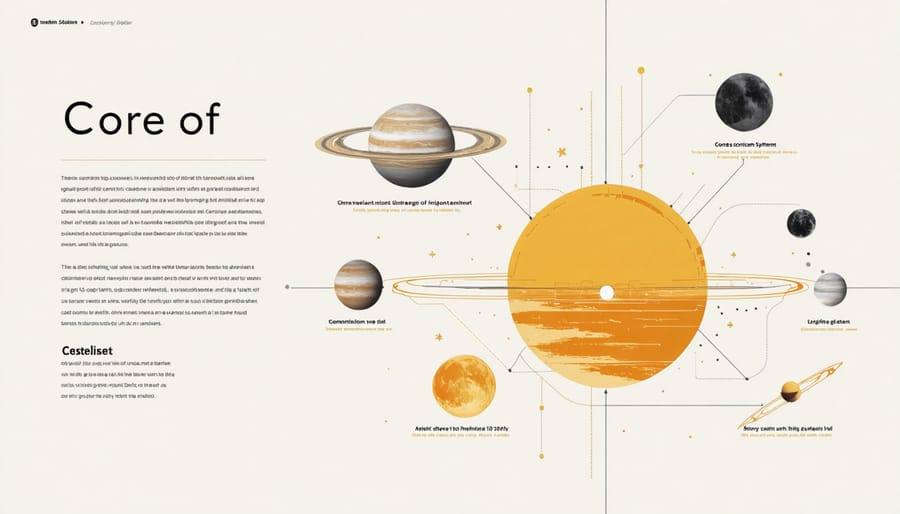
Smart Integration Features
Modern integrated solar solutions come with intuitive smart features that put you in control of your home’s energy usage. Through user-friendly smartphone apps, you can monitor your solar production, track energy consumption, and adjust settings in real-time from anywhere. These systems automatically optimize power usage by directing solar energy to where it’s needed most or storing excess power in batteries for later use.
Smart scheduling allows you to run energy-intensive appliances during peak solar production hours, maximizing your savings. Many systems also integrate seamlessly with popular smart home platforms, letting you coordinate your solar power with smart thermostats, lighting, and other connected devices. Weather-adaptive features can automatically adjust your system’s operation based on forecasted conditions, ensuring optimal performance year-round.
The system can even learn your household’s energy patterns over time, making intelligent adjustments to maximize efficiency. Real-time alerts keep you informed about system performance, potential issues, and energy-saving opportunities, while detailed reporting helps you understand and improve your energy usage habits.
Real-Time Energy Management at Your Fingertips
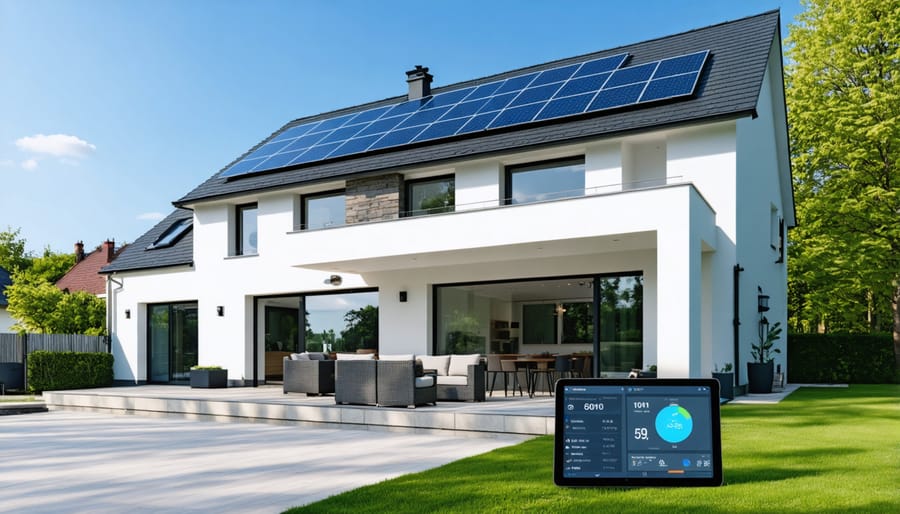
Mobile Control and Monitoring
Modern integrated solar solutions put complete control of your home’s energy system right at your fingertips through user-friendly smartphone apps. These intuitive mobile applications transform how homeowners interact with their solar setup, offering real-time monitoring and management capabilities from anywhere with an internet connection.
Using these apps, you can track your solar production throughout the day, monitor battery storage levels, and view detailed energy consumption patterns. The easy-to-read dashboards display your energy savings in both kilowatt-hours and dollars, helping you understand exactly how your investment is paying off.
Many mobile control systems also allow you to set custom preferences for energy usage. You can schedule high-energy activities during peak solar production hours, activate backup power modes during grid outages, and receive instant notifications about system performance or potential issues that need attention.
Advanced features often include energy forecasting based on weather predictions, allowing you to plan your energy usage more effectively. Some apps even integrate with smart home devices, enabling automated adjustments to optimize energy consumption based on your solar production and lifestyle patterns.
These mobile solutions also provide detailed historical data and performance reports, making it simple to track your system’s efficiency over time and demonstrate your contribution to reducing carbon emissions. Regular software updates ensure your system stays current with the latest energy management features and security protocols.
Automated Energy Optimization
Modern integrated solar solutions take the guesswork out of energy management through sophisticated AI-driven optimization systems. These smart systems continuously monitor your home’s energy consumption patterns, weather forecasts, and solar production to automatically adjust power usage for maximum efficiency.
The system learns from your daily routines and preferences, automatically shifting energy-intensive tasks like running the dishwasher or charging electric vehicles to times when solar production is at its peak. This intelligent scheduling ensures you’re using clean solar energy whenever possible, reducing reliance on grid power and lowering your monthly bills.
During cloudy days or evening hours, the optimization system can automatically draw from battery storage or switch to grid power based on real-time electricity rates. It can even prepare for upcoming weather events by pre-charging batteries or adjusting your home’s temperature in advance.
Many homeowners appreciate the hands-free nature of these systems – there’s no need to manually track energy usage or adjust settings throughout the day. The smart algorithms work silently in the background, making thousands of micro-adjustments to maximize your solar investment while maintaining comfort.
The results are impressive: most households see an additional 20-30% reduction in energy costs compared to traditional solar installations without automated optimization. Plus, many systems offer mobile apps that let you monitor performance and make manual adjustments when desired.
Maximizing Your Energy Independence
Smart Load Management
Smart Load Management acts as your home’s energy traffic controller, intelligently directing power where it’s needed most while maximizing your solar investment. This automated system continuously monitors your household’s energy consumption and adjusts power distribution based on real-time needs and preferences.
Think of it as having a personal energy assistant that knows exactly when to run your dishwasher, charge your electric vehicle, or power up your air conditioning system. During peak solar production hours, the system automatically prioritizes energy-intensive tasks to make the most of your free solar power. When solar production is lower, it strategically reduces non-essential power usage to minimize grid dependency.
The system learns your household’s patterns and adapts accordingly. For example, it might recognize that you typically run your washing machine in the evening and suggest shifting this task to mid-day when solar production is at its peak. You can set custom priorities through a user-friendly app, ensuring critical devices always have power while less essential appliances adjust their consumption based on available solar energy.
This intelligent management translates into tangible savings. By optimizing when and how your appliances use power, the system can reduce your reliance on grid electricity by up to 30%. It also protects your home from power surges by distributing energy loads evenly and prevents system overload during high-demand periods.
The best part? Once set up, this smart system works automatically in the background, requiring minimal input while maximizing your energy efficiency and savings. You can monitor its performance and adjust settings anytime through your smartphone, putting you in complete control of your home’s energy usage.
Battery Storage Integration
Modern solar installations are revolutionizing home energy management through integrated battery storage systems. These powerful solutions allow homeowners to store excess solar energy generated during sunny periods for use when the sun isn’t shining. By incorporating effective battery storage management, households can achieve greater energy independence and maximize their solar investment.
Battery storage integration offers multiple benefits for homeowners. During power outages, your stored energy can keep essential appliances running, providing peace of mind and security. On cloudy days or at night, you can draw from your battery instead of relying on grid power, potentially reducing your electricity bills further. Many utility companies charge higher rates during peak usage hours, but with battery storage, you can switch to stored power during these expensive periods.
Modern battery systems are compact, safe, and require minimal maintenance. They’re designed to integrate seamlessly with your solar panels and home energy management system, automatically deciding when to store or use power based on your consumption patterns and electricity rates. Some systems even learn from your usage habits to optimize energy storage and distribution over time.
The flexibility of battery storage also future-proofs your solar investment. As utility rates and policies change, having storage capacity gives you more control over your energy usage. Many homeowners find that adding battery storage increases their solar system’s value and provides greater return on investment through enhanced energy independence and reduced reliance on the grid.
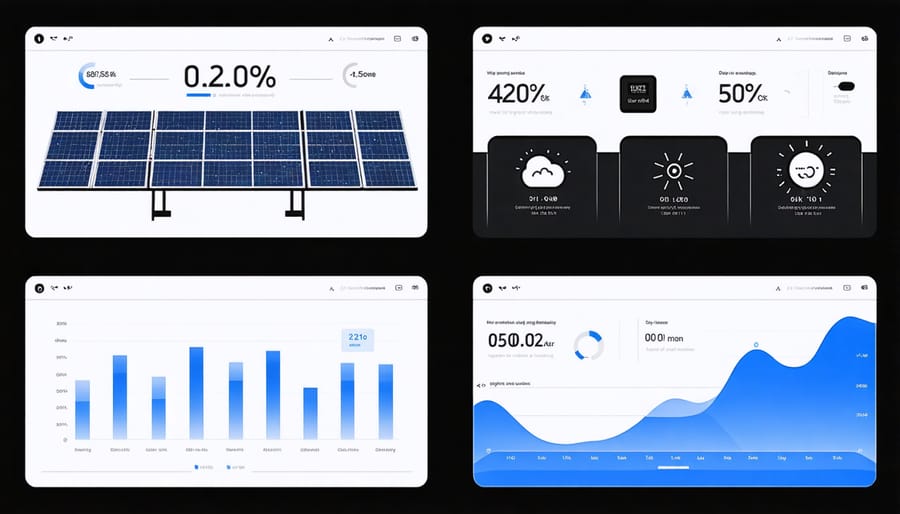
Financial Benefits of Integration
Energy Bill Reduction
Installing integrated solar solutions can significantly reduce your monthly energy bills, with most homeowners seeing savings between 50% to 90% on their electricity costs. The exact amount you’ll save depends on factors like your current energy consumption, local utility rates, and the size of your solar system.
For a typical 2,000-square-foot home, homeowners can expect to save between $100 and $200 per month on their energy bills immediately after installation. These savings compound over time, especially as utility rates continue to rise. Many households report complete payback of their initial investment within 5-8 years through energy bill savings alone.
Smart monitoring systems included with integrated solutions help maximize these savings by automatically adjusting energy usage patterns. For example, the system might store excess solar power in batteries during peak sunlight hours and use it during expensive peak rate periods, further reducing your utility costs.
Additional financial benefits come through net metering programs, where excess energy generated is sold back to the grid, and various tax incentives. When combined with other energy-efficient home improvements, integrated solar solutions can even help some homeowners achieve near-zero energy bills, particularly during sunny months.
Remember that savings continue to grow over the 25-30 year lifespan of the system, making it an increasingly valuable investment as energy costs rise.
Smart Grid Benefits
Utility companies across the country are increasingly offering attractive incentives and programs to homeowners who integrate solar systems with the smart grid. These smart grid integration benefits can significantly enhance your return on investment while contributing to a more stable and efficient power network.
Many utilities now offer net metering programs, allowing you to earn credits for excess energy your system produces. Some providers have implemented time-of-use rates, enabling you to maximize savings by using solar power during peak hours when electricity costs are highest. Additional incentives may include reduced connection fees, expedited permits, and even cash rebates for installing grid-connected solar systems.
Smart grid programs also enable demand response participation, where you can earn rewards by adjusting your energy usage during high-demand periods. Some utilities offer virtual power plant programs, allowing your solar system to contribute to grid stability while generating additional income.
To take advantage of these programs, contact your local utility provider to learn about available incentives in your area. Many companies now have dedicated solar departments to help homeowners navigate the enrollment process and maximize their benefits. Remember that incentive programs vary by location and provider, so it’s worth researching options specific to your region.
The transition to integrated solar solutions represents a significant step forward in home energy management and sustainable living. By combining solar power generation with smart technology and comprehensive energy monitoring, these systems offer homeowners unprecedented control over their energy consumption while significantly reducing their carbon footprint and utility bills.
The benefits of integrated solar solutions extend far beyond simple energy generation. From automated energy optimization and real-time monitoring to seamless grid integration and enhanced home value, these systems provide a complete package that addresses both environmental concerns and practical needs. Homeowners can expect to see average energy savings of 20-30% in the first year alone, with some achieving even greater reductions through smart energy management features.
As technology continues to advance and installation costs decrease, there’s never been a better time to invest in integrated solar solutions. With federal tax incentives, state rebates, and financing options readily available, the initial investment has become more accessible than ever. By taking action today, you’re not just investing in your home’s future; you’re contributing to a more sustainable planet while enjoying immediate benefits in comfort, control, and cost savings.
Don’t wait to embrace the solar revolution. Contact a certified solar installer to assess your home’s potential and discover how an integrated solar solution can transform your energy future. The path to energy independence and sustainability starts with a single step – make that step today.

